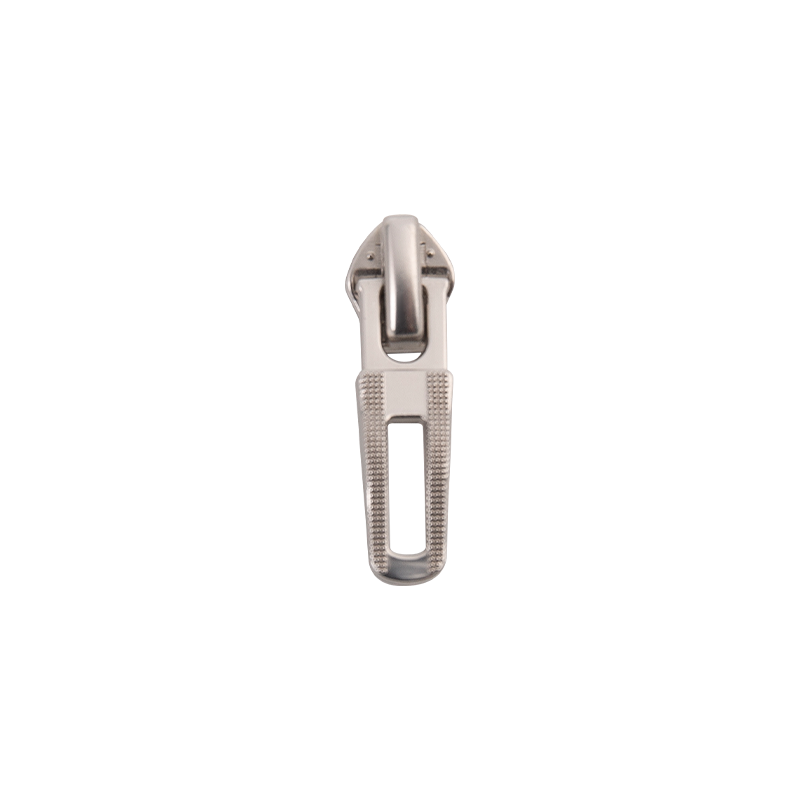To optimize the durability and wear resistance of Nylon Zipper Slider, improvements can be made in many aspects, including material selection, design optimization, surface treatment and production process. Here are some specific optimization strategies:
Ordinary nylon has good flexibility and wear resistance, but it may wear out due to friction under long-term use. By using glass fiber reinforced nylon or carbon fiber reinforced nylon, the strength and wear resistance of the slider can be greatly improved. Choose wear-resistant nylon material (such as nylon 66), which has higher wear resistance and better anti-aging performance, suitable for frequently used zippers.
Adding solid lubricants (such as graphite, polytetrafluoroethylene PTFE, etc.) to nylon materials can effectively reduce the friction between the slider and the zipper teeth, thereby improving wear resistance and extending service life. By adding antioxidants and anti-UV additives to the material, the aging problem of nylon sliders under high temperature and sunlight can be reduced, thereby improving durability.
By optimizing the shape of the slider to make it fit better with the zipper teeth, unnecessary friction and wear can be reduced. In particular, the part that contacts the zipper should be designed to be streamlined to reduce resistance and friction. Structural optimization is performed in the internal slideway area of the slider to avoid uneven friction distribution, thereby reducing local wear. Optimizing the surface smoothness of the slideway can also help reduce friction and extend service life.
Consider sealing rings or spring devices in the design to increase the contact stability between the slider and the zipper teeth to avoid jamming or wear caused by looseness or uneven friction.

Through chrome plating, anodizing or spray coating technology, a hardened layer is formed on the surface of the nylon zipper slider, which can significantly improve its wear resistance, corrosion resistance and oxidation resistance. The hardness of the zipper slider can be enhanced, surface friction can be reduced, and durability can be increased. The hardness of the zipper slider surface can be improved, and the UV resistance can be enhanced to avoid aging caused by UV exposure. Adding a lubricating coating to the slider surface, such as PTFE (polytetrafluoroethylene) coating, can greatly reduce friction, make the slider more stable during sliding, and extend service life.
Using microstructure surface treatment, such as laser etching or sandblasting, can form microscopic concave and convex textures on the surface of the slider, enhance sliding stability and reduce friction, further improving durability.
Use high-precision injection molds to ensure the precise size of each nylon slider to avoid uneven friction or jamming due to dimensional deviation.
During the injection molding process, optimize the cooling rate to make the internal structure of the slider more uniform and improve its overall strength and durability.
Use automated production lines and automatic inspection systems for efficient production to ensure the surface quality and dimensional consistency of each slider and avoid quality problems caused by human factors or production instability.
In extreme temperature environments (such as high or low temperatures), nylon materials may become brittle or soften, affecting the performance of zipper sliders. By selecting high and low temperature resistant nylon materials or adding high temperature resistant enhancers during the production process, the stability of the slider under temperature changes can be improved.
Nylon zipper sliders may be exposed to various chemicals (such as grease, sweat, detergents, etc.), which may cause aging or damage to the slider. By choosing chemical-resistant materials or adding anti-corrosion coatings to the surface, the durability of the slider can be significantly improved to avoid damage caused by chemicals.
Maintenance and cleaning are the key to extending the life of nylon zipper sliders. Regularly clean the contact area between the zipper teeth and the slider to avoid the accumulation of dust, sand and other debris to reduce wear.
When used in harsh environments, lubricants can be applied regularly to reduce friction and keep the slider smooth.
Avoid excessive pulling of the zipper, especially when the load is too heavy or the zipper is used excessively, which will accelerate the wear of the slider. Correct use of the zipper and avoiding excessive bending of the zipper can extend the life of the slider.
By comprehensively considering multiple aspects such as material selection, design optimization, surface treatment process, production process and use environment, the durability and wear resistance of the Nylon Zipper Slider can be effectively improved. This not only extends the service life of the product, but also improves the user experience and meets the market demand for high-quality zipper products.

 en
en  русский
русский 한국어
한국어 get a free quote
get a free quote
















